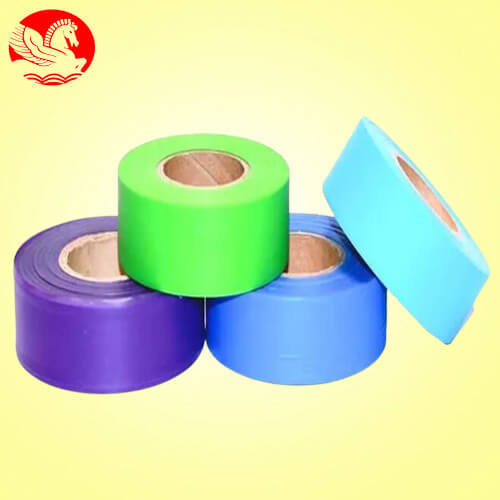In the world of construction, forestry, landscaping, and surveying, the use of survey tape and flagging tape is an indispensable practice. It's not just about marking boundaries and points of interest; it's about ensuring that the job gets done efficiently and accurately. This comprehensive guide will delve deep into the world of survey tape, flagging tape colors, and their significance, equipping you with the knowledge you need to excel in your projects.
The Importance of Survey Tape
Survey tape, often referred to as flagging tape, is a colorful, non-adhesive ribbon-like material used by professionals across various industries. Its primary purpose is to mark, delineate, or highlight areas, objects, or important reference points in outdoor settings. Let's explore its various uses and the factors that make it an essential tool:
Marking Boundaries
In construction and landscaping projects, clearly defined boundaries are crucial. Survey tape comes in handy to mark property lines, project perimeters, and areas where work needs to be done. Its vibrant colors ensure visibility, even from a distance, making it easier for workers to follow instructions accurately.
Safety and Warning Signals
Safety is paramount in any outdoor work environment. The high-visibility colors of flagging tape are used to warn workers about potential hazards, such as buried utilities, uneven terrain, or restricted access areas. For instance, bright red or fluorescent orange tape can signify immediate danger, while yellow may indicate caution.
Data Collection and Reference Points
Surveyors rely on survey tape to establish reference points for measurements. Different colors can represent specific information, such as blue tape indicating water features and green tape designating vegetation. This assists in gathering precise data and simplifies the surveying process.
Understanding Flagging Tape Colors
One of the most distinctive features of survey tape is the variety of colors available. These colors are not just random choices; they hold specific meanings and serve practical purposes in the field. Here's a breakdown of common flagging tape colors and their significance:
Orange
Orange survey tape is frequently associated with boundaries and areas of caution. Its high visibility makes it ideal for marking off-limits zones or warning workers of potential hazards, promoting safety on the job site.
Red
Red tape signifies immediate danger. When you spot red flagging tape, it's essential to proceed with utmost caution. This color is used to highlight hazardous conditions that require immediate attention.
Yellow
Yellow flagging tape is a universal symbol of caution. It indicates that there may be specific hazards in the area, and workers should be aware of potential risks. Yellow tape can also mark temporary detours or alternate routes.
Blue
Blue survey tape is often chosen to represent water features. In construction and surveying, it's essential to know the location of water sources. Blue tape helps identify rivers, streams, or bodies of water that need to be accounted for in the project.
Green
Green flagging tape is used to identify vegetation or natural resources. It's particularly useful in environmental surveys, where distinguishing between different types of vegetation is essential. Green tape is also employed to mark areas that require preservation.
Pink
Pink tape is often associated with temporary markings, such as indicating recently surveyed areas or places that need further investigation. It's a versatile color for various project-related notes.
Purple
Purple flagging tape is often used in land surveying to designate non-surveyed areas, acting as a visual cue to surveyors to avoid these regions. It helps in maintaining accuracy and preventing re-surveying of already mapped sections.
Choosing the Right Colored flagging tape
Selecting the appropriate flagging tape color is crucial for the success of your project. Here are some key considerations when choosing the right tape:
Project Requirements
Assess the specific needs of your project. Are you marking boundaries, highlighting hazards, or conducting environmental surveys? Understanding the project's requirements will help you pick the most suitable tape color.
Visibility
Consider the visibility of the tape in the project environment. Bright, fluorescent colors like orange, red, and yellow are highly visible and are ideal for marking boundaries and hazards.
Durability
The durability of flagging tape is vital, especially in outdoor settings. Ensure that the tape you choose can withstand the elements and last throughout the project.
Regulatory Compliance
In some cases, certain colors may be mandated by local regulations for specific purposes. Be sure to adhere to any regulatory guidelines that apply to your project.
In conclusion, survey tape and flagging tape colors play an essential role in a wide range of industries, providing clarity, safety, and accuracy to projects. By understanding the significance of each color and choosing the right tape for your project's unique requirements, you can enhance efficiency, reduce risks, and ensure the successful completion of your tasks.

Comments
Post a Comment